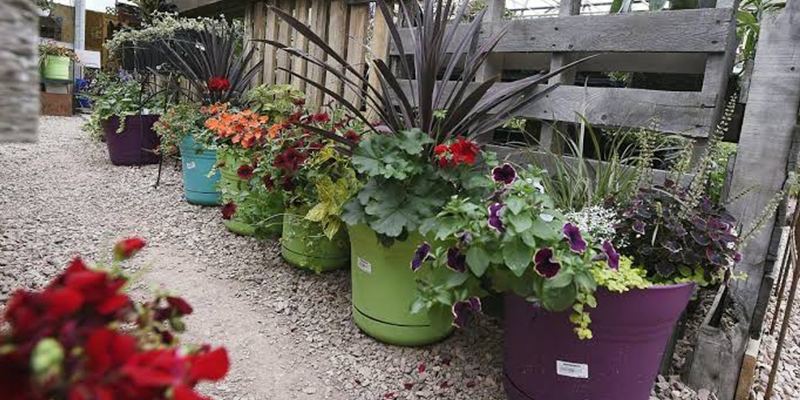Selecting the most appropriate container is every bit as important as choosing the plant to grow in them. Materials such as terracotta, fiberglass stone and wood all make wonderful containers and most good garden centres carry a comprehensive range of designs. The classic pot shape has gently sloping sides that enable you to easily remove the plant and its root ball for repotting or planting out. Square pots are useful for plants with extensive root system as they hold a greater volume of potting mix for their dimensions than conical pots. When selecting urns and jars, that are designed to taper towards the mouth, make sure that the container has a sufficiently wide planting area for your needs. For tall displays opt for pots with heavy bases to prevent the planting from toppling over. And, if you prefer improvised container, such as wheelbarrows, remember to provide a drainage hole in the base.
Traditional terracotta:
One of the most popular materials for the pot has always been terracotta, which means that more pot designs are available in this than in any other medium. Plain or decorative, its rich, earthy colour combines beautifully with plants, and it weathers so well that its appearance often improves with age. Terracotta clay is a porous material and quickly soaks up water, so remember to water your plants in terracotta pots frequently, to prevent them from drying out.
Natural wood:
Wood is an attractive natural material for tubs, troughs and window boxes and a range of other containers. In damp regions, wood containers have a limited life unless they are made from hardwood. Softwood, however, can be treated with preservative to halt decay, or you can line wooden window boxes and tubs with plastic to limit rotting caused watering.
Lead and copper:
Plant look particularly attractive in old lead and copper containers, especially when the surfaces of these metals develop a green-blue or grey patina on exposure to the weather. Although metal containers are expensive and very heavy, they last a lifetime. I buy antique containers in the traditional designs at auction.
Stone and fiberglass:
Stone containers, like lead, are both beautiful and cumbersome. They look magnificent but need to be housed in a permanent site, as moving them about can be a strenuous task. Reconstituted stone or concrete are cheaper alternatives. They can look harsh when brand new. But treated with cultured yoghurt they will soon resemble sculptured stone. A number of fiberglass containers are designed to stimulate natural materials, they are durable, inexpensive and lightweight .
Improvised containers:
Don’t forget those objects that can be adapted to hold plants : chimney pots, wheelbarrows and sinks can be modified to make containers that lend a special quirky charm to the garden.
For more information about Agriculture and Livestock, download Apni Kheti app – Android, iPhone





